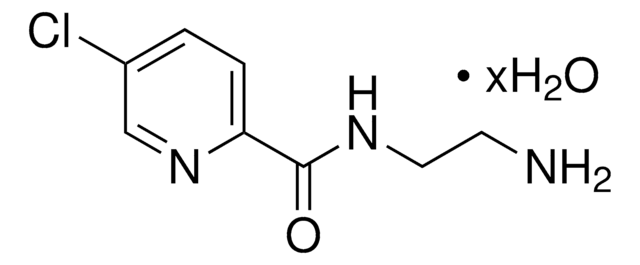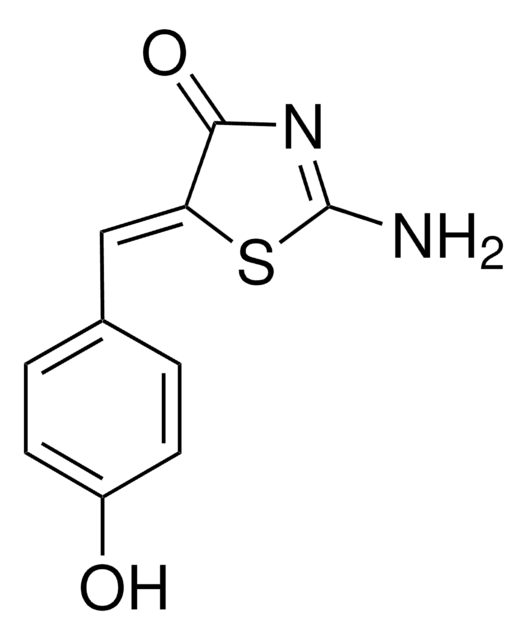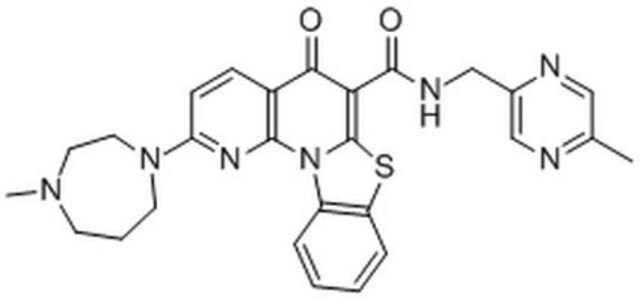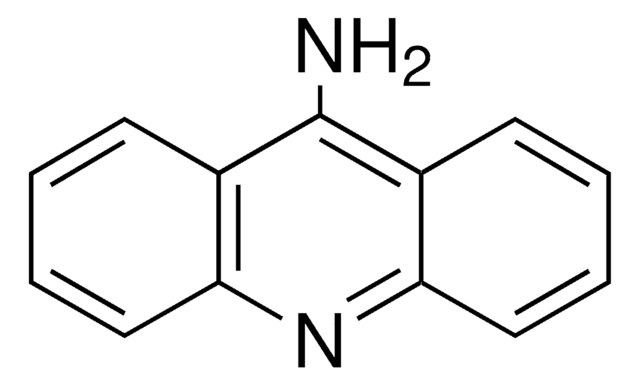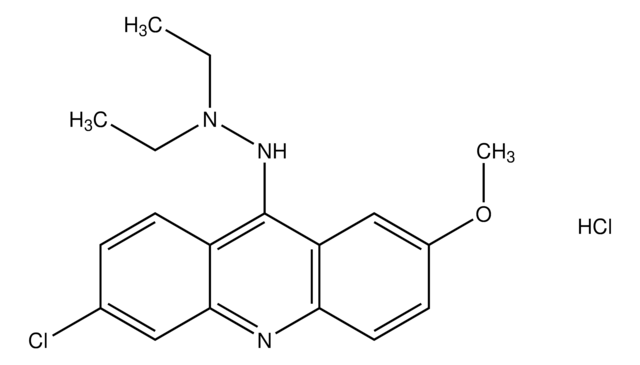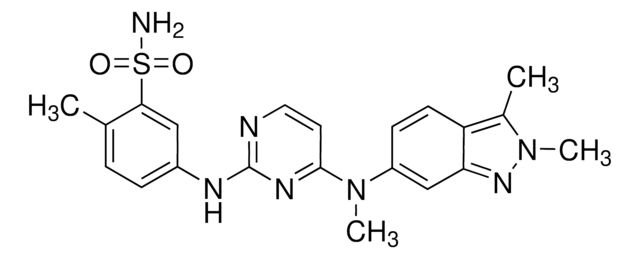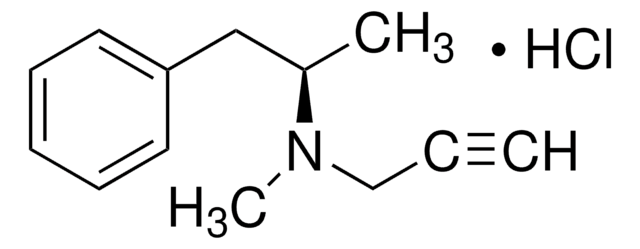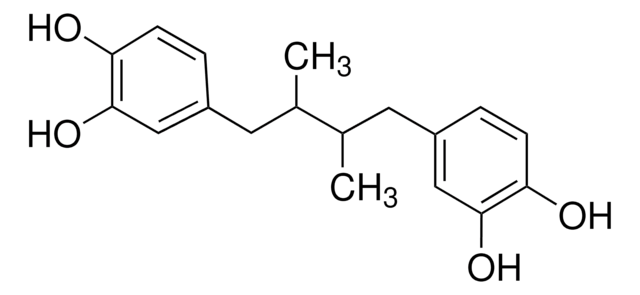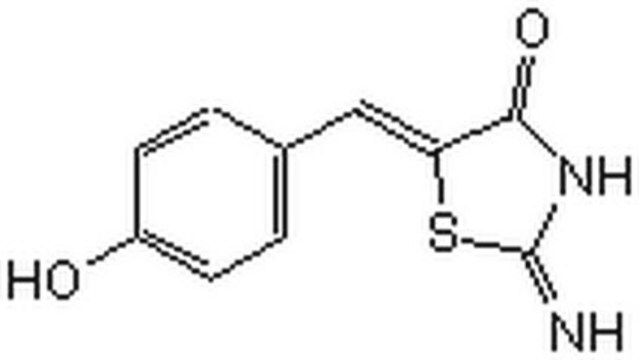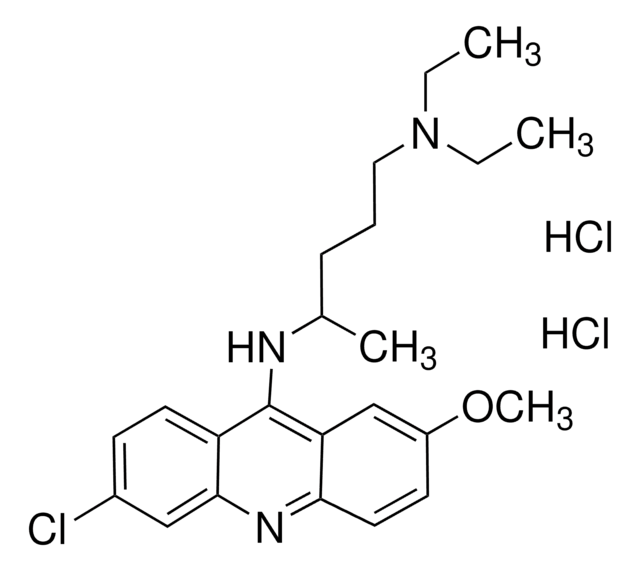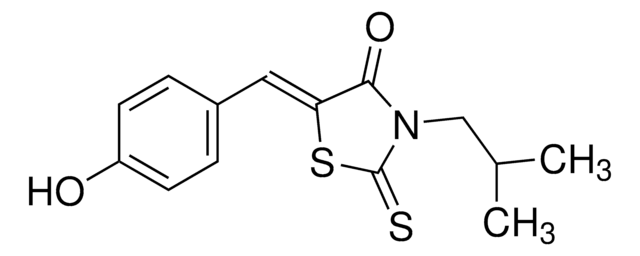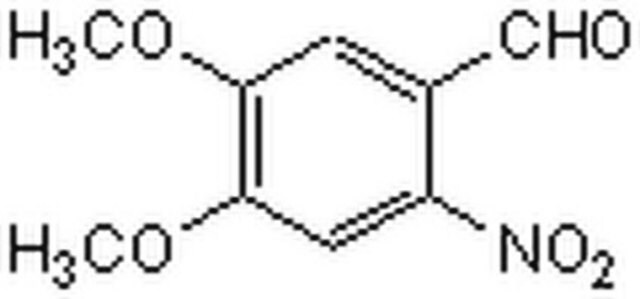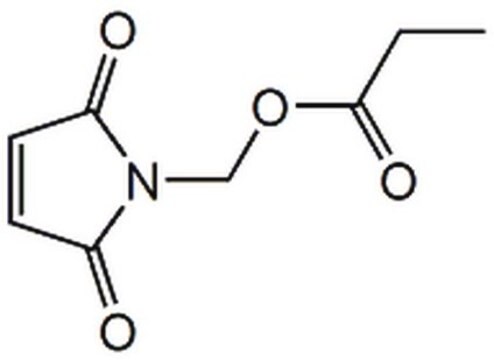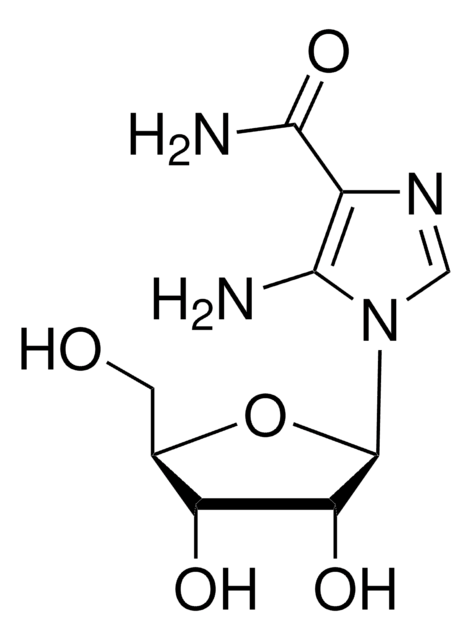SML0364
RAD51 Inhibitor B02
≥98% (HPLC)
Sinonimo/i:
3-(Phenylmethyl)-2-[(1E)-2-(3-pyridinyl)ethenyl]-4(3H)-quinazolinone
About This Item
Prodotti consigliati
Livello qualitativo
Saggio
≥98% (HPLC)
Stato
powder
Colore
white to dark brown
Solubilità
DMSO: ≥5 mg/mL
Temperatura di conservazione
2-8°C
Stringa SMILE
O=C1N(CC2=CC=CC=C2)C(/C=C/C3=CN=CC=C3)=NC4=C1C=CC=C4
InChI
1S/C22H17N3O/c26-22-19-10-4-5-11-20(19)24-21(13-12-17-9-6-14-23-15-17)25(22)16-18-7-2-1-3-8-18/h1-15H,16H2/b13-12+
GEKDQXSPTHHANP-OUKQBFOZSA-N
Applicazioni
- to test its effect on the polar body extrusion (PBE) rate in porcine oocytes
- for RAD51 inhibition in porcine embryos
- as RAD51 inhibitor and to test its effect on targeted nucleotide substitution (TNS) in induced pluripotent stem cells (iPSCs)
Azioni biochim/fisiol
Codice della classe di stoccaggio
11 - Combustible Solids
Classe di pericolosità dell'acqua (WGK)
WGK 3
Punto d’infiammabilità (°F)
Not applicable
Punto d’infiammabilità (°C)
Not applicable
Scegli una delle versioni più recenti:
Certificati d'analisi (COA)
Non trovi la versione di tuo interesse?
Se hai bisogno di una versione specifica, puoi cercare il certificato tramite il numero di lotto.
Possiedi già questo prodotto?
I documenti relativi ai prodotti acquistati recentemente sono disponibili nell’Archivio dei documenti.
I clienti hanno visto anche
Il team dei nostri ricercatori vanta grande esperienza in tutte le aree della ricerca quali Life Science, scienza dei materiali, sintesi chimica, cromatografia, discipline analitiche, ecc..
Contatta l'Assistenza Tecnica.